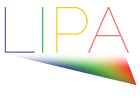Fremont, CA – January 22, 2024
The Academy of Motion Picture Arts and Sciences (AMPAS) recently announced 16 Scientific and Technical Achievements to be Honored with Academy Awards.
The Laser Illuminated Projection Association (www.LIPAinfo.org) is pleased to announce that seven (7) of the 16 awards went to members, co-founders, or past members of LIPA.
Three (3) Technical Achievement Awards (Academy Certificates) and four (4) Scientific and Engineering Awards (Academy Plaques) will be awarded at the upcoming “Scientific and Technical Awards” ceremony on Friday, February 23, 2024, at the Academy Museum of Motion Pictures in Los Angeles (6067 Wilshire Boulevard at Fairfax).
The announcement by The Academy is significant. It recognizes the technical and engineering contributions of LIPA’s members in the development of laser illuminated projection technology and products over a span of more than 20 years. The core missions of LIPA being:
- To be a single industry voice in rationalizing laser regulations.
- To provide companies a forum to develop evaluation methods and provide that information to standards bodies
- Educate key constituencies
- Coordinate best practices
Since it was founded in 2011, LIPA has provided the scientific basis for the establishment of rational and practical safety limits and practices, enabling the broadest possible adoption of laser illumination – for digital cinema and nearly all other projection applications. Furthermore, it has led multi-year efforts to rationalize, update and codify ISO/IEC international laser safety standards in coordination with the updating of the historical regulations of the US-FDA.
LIPA Scientific and Technical Academy Award Recipients (from the Academy’s January 11, 2024, press release – LIPA member companies and recipients in Bold)
TECHNICAL ACHIEVEMENT AWARDS (ACADEMY CERTIFICATES)
To Bill Beck for his pioneering utilization of semiconductor lasers for theatrical laser projection systems.
Bill Beck’s advocacy and education to the cinema industry while at Laser Light Engines contributed to the transition to laser projection in theatrical exhibition.
To Gregory T. Niven for his pioneering work in using laser diodes for theatrical laser projection systems.
At Novalux and Necsel, Gregory T. Niven demonstrated and refined specifications for laser light sources for theatrical exhibition, leading the industry’s transition to laser cinema projection technology. [ed. note: Necsel was a member of LIPA and was acquired by USHIO/Christie]
To Yoshitaka Nakatsu, Yoji Nagao, Tsuyoshi Hirao, Tomonori Morizumi and Kazuma Kozuru for their development of laser diodes for theatrical laser projection systems.
Yoshitaka Nakatsu, Yoji Nagao, Tsuyoshi Hirao, Tomonori Morizumi and Kazuma Kozuru collaborated closely with cinema professionals and manufacturers while at Nichia Corporation’s Laser Diode Division, leading to the development and industry-wide adoption of blue and green laser modules producing wavelengths and power levels matching the specific needs of the cinema market.
SCIENTIFIC AND ENGINEERING AWARDS (ACADEMY PLAQUES)
To Steve Read and Barry Silverstein for their contributions to the design and development of the IMAX Prismless Laser Projector. Utilizing a novel optical mirror system, the IMAX Prismless Laser Projector removes prisms from the laser light path to create the high brightness and contrast required for IMAX theatrical presentation.
To Peter Janssens, Goran Stojmenovik and Wouter D’Oosterlinck for the design and development of the Barco RGB Laser Projector. The Barco RGB Laser Projector’s novel and modular design with an internally integrated laser light source produces flicker-free uniform image fields with improved contrast and brightness, enabling a widely adopted upgrade path from xenon to laser presentation without the need for alteration to screen or projection booth layout of existing theaters.
To Michael Perkins, Gerwin Damberg, Trevor Davies and Martin J. Richards for the design and development of the Christie E3LH Dolby Vision Cinema Projection System, implemented in collaboration between Dolby Cinema and Christie engineering teams.
Note that these 16 recipients, from 7 current or past LIPA member companies, were supported in their efforts by a large cast of supporting actors from their respective organizations and many other parts of the Digital Cinema ecosystem.
LIPA, along with its founders, officers, and members both current and past, can take great pride in their contributions to the global cinema industry. They have together combined the many benefits of laser illumination to provide better and more consistent image quality with lower total cost of ownership and greater sustainability – making Laser the light source of choice for all Cinema exhibitors. From intimate “art house” theaters to the largest multiplex 3D-capable screens to the most advanced Premium Large Format (PLF) integrated facilities, laser illuminated cinema delivers the original creative intent: the best possible images – show after show after show.






